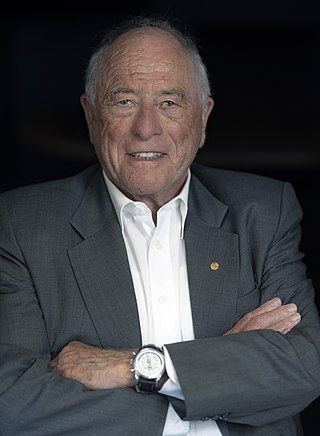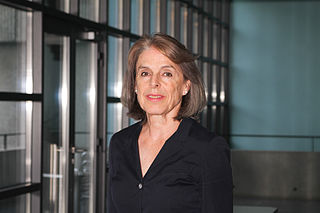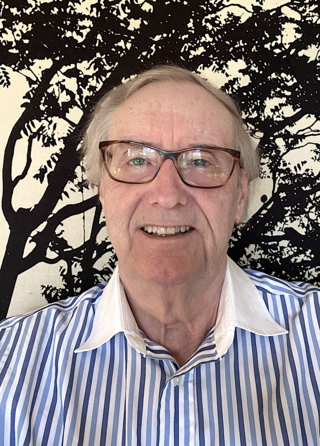
Kurt Wüthrich is a Swiss chemist/biophysicist and Nobel Chemistry laureate, known for developing nuclear magnetic resonance (NMR) methods for studying biological macromolecules.

Nuclear magnetic resonance spectroscopy, most commonly known as NMR spectroscopy or magnetic resonance spectroscopy (MRS), is a spectroscopic technique based on re-orientation of atomic nuclei with non-zero nuclear spins in an external magnetic field. This re-orientation occurs with absorption of electromagnetic radiation in the radio frequency region from roughly 4 to 900 MHz, which depends on the isotopic nature of the nucleus and increased proportionally to the strength of the external magnetic field. Notably, the resonance frequency of each NMR-active nucleus depends on its chemical environment. As a result, NMR spectra provide information about individual functional groups present in the sample, as well as about connections between nearby nuclei in the same molecule. As the NMR spectra are unique or highly characteristic to individual compounds and functional groups, NMR spectroscopy is one of the most important methods to identify molecular structures, particularly of organic compounds.

The Max Planck Institute for Biophysical Chemistry, also known as the Karl-Friedrich Bonhoeffer Institute, was a research institute of the Max Planck Society, located in Göttingen, Germany. On January 1, 2022, the institute merged with the Max Planck Institute for Experimental Medicine in Göttingen to form the Max Planck Institute for Multidisciplinary Sciences.

Molecular biophysics is a rapidly evolving interdisciplinary area of research that combines concepts in physics, chemistry, engineering, mathematics and biology. It seeks to understand biomolecular systems and explain biological function in terms of molecular structure, structural organization, and dynamic behaviour at various levels of complexity. This discipline covers topics such as the measurement of molecular forces, molecular associations, allosteric interactions, Brownian motion, and cable theory. Additional areas of study can be found on Outline of Biophysics. The discipline has required development of specialized equipment and procedures capable of imaging and manipulating minute living structures, as well as novel experimental approaches.

The residual dipolar coupling between two spins in a molecule occurs if the molecules in solution exhibit a partial alignment leading to an incomplete averaging of spatially anisotropic dipolar couplings.
Adriaan "Ad" Bax is a Dutch-American molecular biophysicist. He was born in the Netherlands and is the Chief of the Section on Biophysical NMR Spectroscopy at the National Institutes of Health. He is known for his work on the methodology of biomolecular NMR spectroscopy. He is a corresponding member of the Royal Netherlands Academy of Arts and Sciences, a member of the National Academy of Sciences, a fellow of the American Academy of Arts and Sciences, and a Foreign Member of the Royal Society.
In biology, membrane fluidity refers to the viscosity of the lipid bilayer of a cell membrane or a synthetic lipid membrane. Lipid packing can influence the fluidity of the membrane. Viscosity of the membrane can affect the rotation and diffusion of proteins and other bio-molecules within the membrane, there-by affecting the functions of these things.
Herbert Sander Gutowsky was an American chemist who was a professor of chemistry at the University of Illinois Urbana-Champaign. Gutowsky was the first to apply nuclear magnetic resonance (NMR) methods to the field of chemistry. He used nuclear magnetic resonance spectroscopy to determine the structure of molecules. His pioneering work developed experimental control of NMR as a scientific instrument, connected experimental observations with theoretical models, and made NMR one of the most effective analytical tools for analysis of molecular structure and dynamics in liquids, solids, and gases, used in chemical and medical research, His work was relevant to the solving of problems in chemistry, biochemistry, and materials science, and has influenced many of the subfields of more recent NMR spectroscopy.

Sir Christopher Martin Dobson was a British chemist, who was the John Humphrey Plummer Professor of Chemical and Structural Biology in the Department of Chemistry at the University of Cambridge, and Master of St John's College, Cambridge.

Biophysical chemistry is a physical science that uses the concepts of physics and physical chemistry for the study of biological systems. The most common feature of the research in this subject is to seek an explanation of the various phenomena in biological systems in terms of either the molecules that make up the system or the supra-molecular structure of these systems. Apart from the biological applications, recent research showed progress in the medical field as well.
Deuterium NMR is NMR spectroscopy of deuterium, an isotope of hydrogen. Deuterium is an isotope with spin = 1, unlike hydrogen-1, which has spin = 1/2. The term deuteron NMR, in direct analogy to proton NMR, is also used. Deuterium NMR has a range of chemical shift similar to proton NMR but with poor resolution, due to the smaller magnitude of the magnetic dipole moment of the deuteron relative to the proton. It may be used to verify the effectiveness of deuteration: a deuterated compound will show a strong peak in deuterium NMR but not proton NMR.
Robert Guy Griffin is a Professor of Chemistry and director of the Francis Bitter Magnet Laboratory at Massachusetts Institute of Technology (MIT). He is known for his work in nuclear magnetic resonance (NMR) and developing high-field dynamic nuclear polarisation (DNP) for the study of biological solids. He has contributed many different methods and approaches now widely used in solid-state NMR spectroscopy, in particular in context of magic-angle-spinning NMR. For example, this extends to methods for resolution enhancement via heteronuclear decoupling, as well as techniques for polarisation transfer between nuclei.
The Bijvoet Centre for Biomolecular Research is a research institute at Utrecht University. The Bijvoet Centre performs research on the relation between the structure and function of biomolecules, including proteins and lipids, which play a role in biological processes such as regulation, interaction and recognition. The Bijvoet Centre houses advanced infrastructures for the analysis of proteins and other biomolecules using NMR, X-ray crystallography, electron microscopy and mass spectrometry. The institute is named after famous Dutch chemist Johannes Martin Bijvoet, who worked at Utrecht University.

Research at the Biozentrum of the University of Basel is dedicated to the central question of how molecules and cells create life − from atom to organism, and from the physics of life to the dynamics of multicellular systems. Accordingly, the scientists at the Biozentrum are active in a wide range of research fields. These disciplines are not strictly separated from each other, but often overlap, thus leading to new questions and collaborations.
Michael F. Brown is an American chemist. Since 1987, he has been a Professor of Chemistry at the University of Arizona, and since 2003 has held joint appointments as a Professor of Physics and Professor of Applied Mathematics. Prior to the University of Arizona, Brown earned tenure at the University of Virginia. His research involves the application of NMR spectroscopy and other biophysical methods to study membrane lipids, liquid crystals, and membrane proteins. Brown has particularly been a pioneer in the application of solid-state NMR spectroscopy to the study of lipid bilayer dynamics.

Anna Seelig-Löffler is a Swiss Biophysical chemist who worked at the Biozentrum University of Basel, Switzerland.
Marc Baldus is a physicist and professor of NMR spectroscopy at Utrecht University. He is especially known for his work in the field of structural biology using solid-state nuclear magnetic resonance (ssNMR) spectroscopy. He applies ssNMR methods to establish structure-function relationships in complex biomolecular systems including membrane and Amyloid proteins. In addition, he develops cellular NMR methods to study large molecular transport and insertion systems in bacteria as well as signal transduction mechanisms in eukaryotic cells.

Alfred G. Redfield was an American physicist and biochemist. In 1955 he published the Redfield relaxation theory, effectively moving the practice of NMR or Nuclear magnetic resonance from the realm of classical physics to the realm of semiclassical physics. He continued to find novel magnetic resonance applications to solve real-world problems throughout his life.

Eric Oldfield is a British chemist, the Harriet A. Harlin Professor of Chemistry and a professor of Biophysics at the University of Illinois at Urbana-Champaign. He is known for his work in nuclear magnetic resonance spectroscopy of lipids, proteins, and membranes; of inorganic solids; in computational chemistry, and in microbiology and parasitology. He has received a number of recognitions for his work, including the American Chemical Society's Award in Pure Chemistry, the Royal Society of Chemistry's Meldola Medal and the Biochemical Society's Colworth Medal, and he is a member of the American Association for the Advancement of Science, a Fellow of the Royal Society of Chemistry, and a Fellow of the American Physical Society.

Jürgen Engel is a German-born Swiss chemist and biophysicist.











